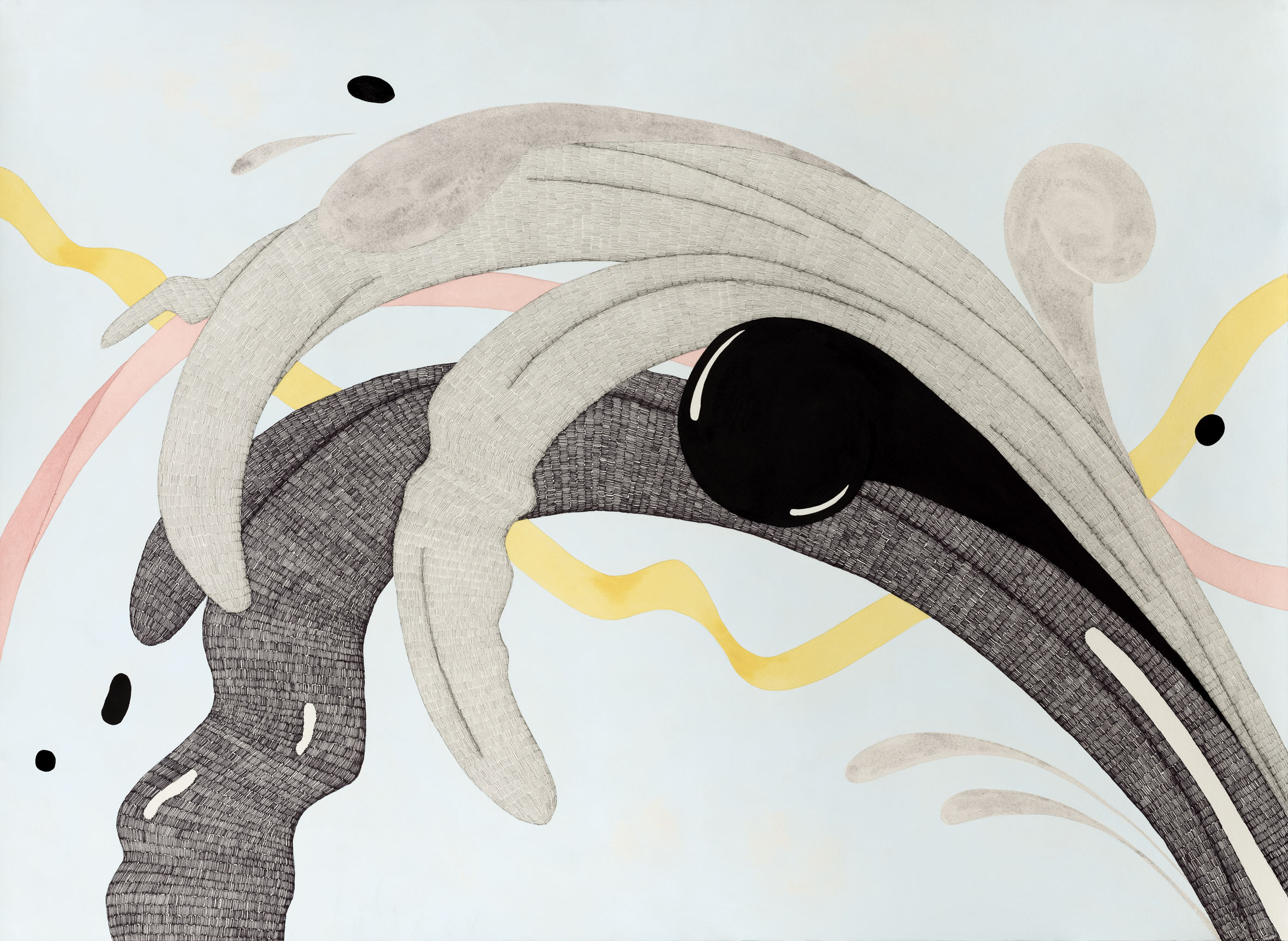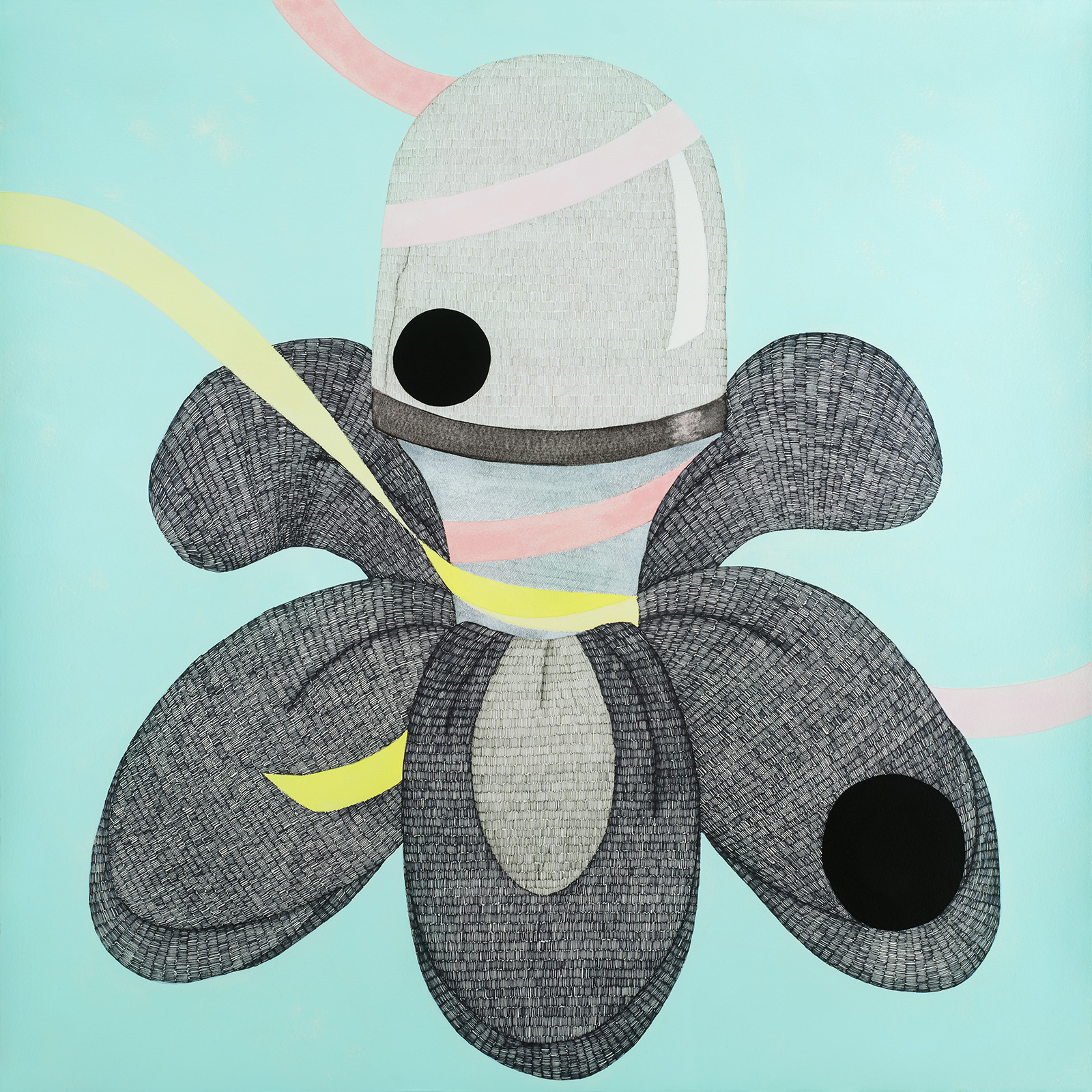Miss Pinball
1 May - 27 May 2018
.M Contemporary, Sydney
Michelle Cawthorn – Miss Pinball - exhibition essay
by Chloé Wolifson
“One two three FOUR five, six se-ven eight NINE ten, eleven twelve!”
For viewers of children’s TV show Sesame Street in the late 1970s and through the 80s, Pinball Number Count was a regular earworm. The educational animation, created in 1976 by Imagination Inc. for the Children’s Television Workshop, uses a pinball machine as a trope to explore themes of all sorts – from the circus to modes of transport, from farming to golf, and mediaeval knights and dragons – all underpinned by a colourful animation and a funky soundtrack including vocals by popular contemporary group the Pointer Sisters. Now, it has become a platform for Michelle Cawthorn to explore themes of childhood, parenthood and gender in her works for the exhibition Miss Pinball.
For a young Michelle Cawthorn, Pinball Number Count was appealing on that simplest of levels: her birthday is on the 12th of the month, therefore the count, which peaked at this number every time, was special. However looking back on the segment now through the self-reflexive lens of a PhD candidate, the artist finds other threads connecting it to her life: its’ hand-drawn animation reflects a handmade quality which Cawthorn values in her practice, and the use of watercolour aligns with the artist’s use of water-based media (watercolour, acrylic, gouache and liquid graphite) in her two- dimensional practice. Was there something in this early experience that stuck with Cawthorn and the way she has chosen to perceive and use colour?
This reflective mode is characteristic of Cawthorn’s practice lately, however while recent shows have been prompted by grief, Miss Pinball takes a more celebratory tone. Drawn to an image of the Old Faithful Geyser in Yellowstone Park which represents the pinball jackpot in the animation’s ‘Sightseeing USA’ section (aka Number 12), Cawthorn was reminded of the water bubblers of her childhood. The stylised spurts of water that raise up the winning pinball were reflected in the biomorphic forms that were already present in Cawthorn’s works, so the connection made immediate sense.
Like the animation itself, Cawthorn’s works contain a sense of dynamism, improvisation and fluidity. Their pastel colours and pen lines reflect the childhood inspiration for the work, while their motifs have been abstracted and removed from their number-focussed context. The curved ramps of the animation have become ribbon-like in Cawthorn’s works, looping around the central bumper and bubbler shapes and becoming visual threads linking the various images in the show as they enter and leave the paper’s boundaries. The pastel blue, pink and yellow of the ribbons and background, and the grey tones of the pen and graphite bubbler, are punctuated by black spots and looped shapes resembling commas that surround or emerge from the central bumper. In this case these black dots reference the pinball, however it is a motif that recurs in Cawthorn’s practice – sometimes suggesting an eye, other times a full stop, void or a passage through the image.
Cawthorn’s training as an architect has influenced her art practice in intriguing ways, most notably, the use of pen to shade vast areas of each composition. The artist believes that her architectural studies gave her the confidence to work with pen and its immediacy so prominently, and relishes the challenge of working with or abandoning works which contain ‘mistakes’ (other water-based media also provide this challenge). In the studio she points out areas where she has been forced to accept that things haven’t gone the way she intended, or work over them with one of the aforementioned black punctuation points. It’s a practice that requires intense focus to avoid having to entirely abandon a work. Despite the organic, swirling looseness to these compositions they were not made with a looseness of hand.
The works in Miss Pinball are playful while also containing an air of menace – these blown-up, isolated shapes suggest elements of childhood memories that have become abstracted in the mind and taken on a life of their own. Their organic forms recall petals and stamens looming in a suggestively sexual way. Indeed Cawthorn is interested in reflecting feminine and masculine forms in the motifs she creates. She has interpreted the pinball bumpers as a masculine symbol in three works, contrasting with the feminine symbols of the pinball’s holes and saucers.
Miss Pinball is not only a suite of works on paper but a total environment in which, by entering the gallery the viewer becomes the pinball, bouncing from work to work. The gallery walls, skirting and doorways are painted to recall the visuals of Pinball Number Count and a soft sculpture takes the form of a giant pinball. Another architectural influence can be found in these three-dimensional and relief works, which the artist sees as ‘structures’ rather than sculptures. Cawthorn recalls one of her architectural studies projects which was constructed with textile rather than anything firmer. (Its tent-like character finds synergy with the various carnival-like themes that are explored in Pinball Number Count.) The inclusion of soft structures in Miss Pinball further immerse the visitor in the world of the pinball machine as our surroundings morph between two and three dimensions.
Scale is significant in Cawthorn’s practice. She recalls visiting the Louvre as a child and being stunned by a sudden encounter with Géricault’s Raft of Medusa, which she describes as “a massive thing that I somehow felt part of, but also not part of.” In this show Cawthorn’s interest in exploring the way perception of scale changes between childhood and adulthood manifests in the two-dimensional works that are larger than domestic scale, in the soft structures, and in the recreated pinball table that the visitor walks onto when they enter the gallery. Cawthorn immerses the viewer in this world, inviting us to reflect on the impact of these childhood experiences and their place in our adult lives.
March, 2018











